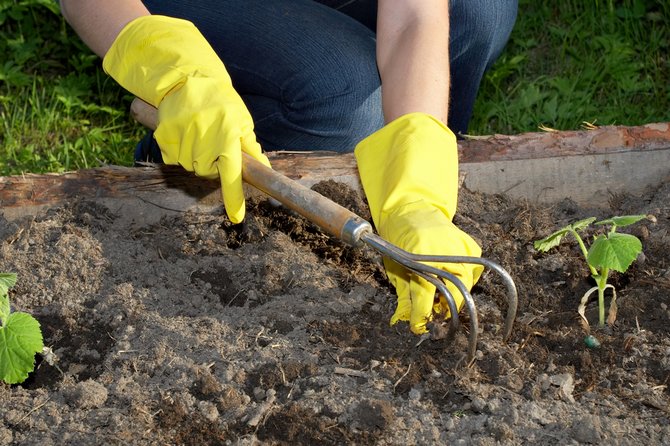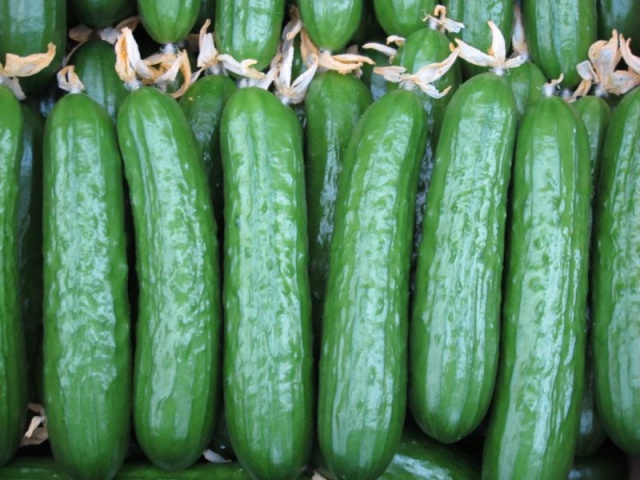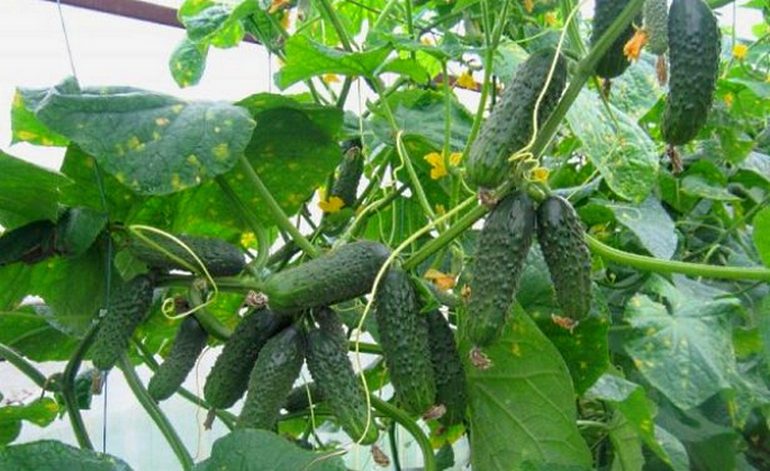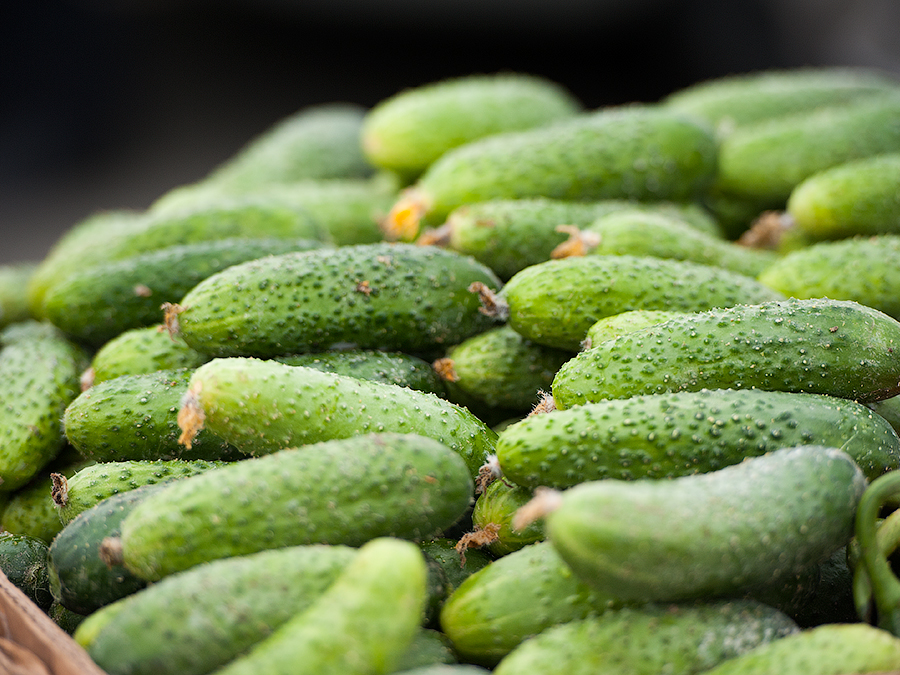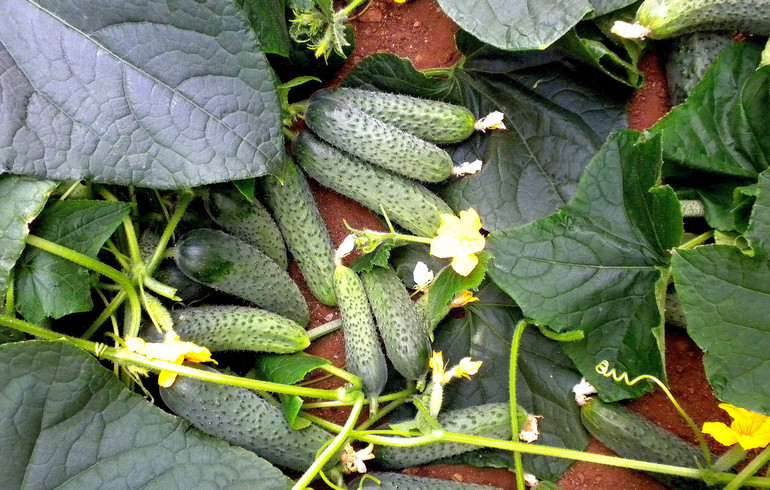Content:
Cucumbers Siberian garland are perfectly adapted to unstable temperatures and changes in humidity. Ease of care, as well as excellent yield make such gherkins the favorites of many summer residents.
Variety history
Garland cucumbers have appeared recently. The employees of the breeding station located in Chelyabinsk need to thank for the painstaking work done. Harvesting of green cucumbers begins 45 days after planting the crop. The unusually high yield allows up to 400 fruits per plant.
Siberian garland - parthenocarpic cucumbers (no pollination is required for fruit formation). The ovaries are formed in all weather conditions.
Garland can be grown both in open ground and in greenhouses.
The Siberian garland is distinguished by powerful bushes, which is why it is recommended for 1 sq.m. plant no more than a couple of plants. In order for the variety to fully show all its wonderful qualities, it is necessary to apply fertilizers, correctly form the ground part and harvest on time. If all conditions are met, fruiting continues until the onset of frost.
Description of the variety
The harvest is represented by fruits of a dark green color, up to 8 cm long. Due to its excellent taste, cucumbers are widely used for preparing fresh salads and homemade preparations.
The culture's hardiness is considered another plus of this variety. Cucumbers tolerate well both drought and lower temperatures, but do not reduce fruiting. Powdery mildew, brown spot, tobacco mosaic, peronosporiosis do not affect plants.
How to grow cucumbers Siberian garland F1
There is nothing new in this process, it is possible to grow both by seed and seedlings. Here everyone chooses the most suitable option. It is important not to forget that preliminary preparation will be needed in any case.
Seedling
You can start planting seeds at the end of March. Pots and fertile soil are prepared in a timely manner. The holes are made about 2 cm deep, the seeds are laid and the top is covered with foil or glass to create a greenhouse effect. For containers, a place with good lighting and a temperature regime of at least +25 degrees is selected. Watering future cucumbers is necessary every few days. The first shoots appear after a week.
As soon as the leaves appear, you can remove the covering materials, but not immediately, but letting the cucumbers get used to the new conditions. Every day the glass is removed for 5-10 minutes so that at the moment when the first sheet is formed, it can be removed. From the 30th day of life, the seedlings are considered suitable for planting in an open bed or in a greenhouse.
Seed method
This option is considered the simplest, but a little preparation is still required:
- seed material must be soaked in warm water and left for a day (floating seeds are considered a marriage unsuitable for further use);
- a weak solution of potassium permanganate is needed to disinfect seeds;
- it is advisable to soak the seeds before the formation of the root system;
- when planting, you must be careful not to damage the roots;
- pits are made in the garden with a depth of 1.5 cm, a distance of 0.7 m between them, and the next row is placed no closer than 15 cm from the previous one.
You can plant seeds at a temperature not lower than +15 degrees.
How to prepare the beds for planting
In an open area for this crop, it is best to choose a place with little shade. The beds are arranged next to natural defenders (fences, trees, buildings) that provide shade. It is not recommended to plant legumes in the immediate vicinity in order to avoid intertwining shoots.
It is worth abandoning the landing and looking for another place if earlier on this site were planted:
- beet;
- zucchini;
- pumpkin.
It is advisable to prepare the beds for cucumbers in the fall. In the selected part of the garden, garbage of plant origin is scattered in a layer of up to 12 cm. Fresh cow dung is laid out on top, everything is covered with a film and remains until spring. When the snow melts, you need to add humus with a layer of up to 15 cm. When the soil is acidified, dolomite flour is used.
When preparing a site for planting in spring, you need to use mineral fertilizers. Rotted manure or compost is scattered on the selected beds, nitrophosphate and wood ash on top. At the end of the work, a soil layer up to 15 cm is laid and abundant watering is carried out.
The finished bed is closed with a film as tightly as possible, and kept for 10 days.
How to care for cucumbers after planting
Weeds are bad neighbors for this crop, and therefore it is important not to forget about regular weeding. The use of mulch allows the gardener to save considerable time on weeding. To prevent the surface of the beds from turning into a hard crust, timely loosening is necessary.
Watering
The Siberian garland needs frequent and abundant watering, which is done early in the morning or late in the evening, so that the foliage of the plants does not get sunburn.
Before flowering, watering is necessary every 3-4 days, with the appearance of the first ovaries, the interval should be reduced to 2 days. When a strong heat is established, watering should be done twice a day, if the leaves begin to fade, this indicates a lack of moisture, which means that you urgently need to take up the watering can.
To prevent water from eroding the ground above the root system, it is recommended to make several grooves between the bushes, where moisture will get, or use the drip irrigation system.
Fertilization
To get a bountiful harvest, you will need to feed the plants frequently. Both chemical fertilizers and folk remedies are suitable here. To achieve a good effect, fertilizing is applied once a week.
It is recommended that you water the beds abundantly before fertilizing to prevent root damage.
How to form Garlands
All bushes need proper shaping, which contributes to more abundant fruiting. The plant should have one stem. Be sure to carry out pinching with the removal of ovaries. Leave only the shoot on which leaves and ovaries are present.
As soon as the shrub reaches two meters in height, the pinching stops, then it can form itself and will twine around the supports. Timely harvesting contributes to the further ripening of the fruit.
Advantages and disadvantages
The advantages of this variety include:
- excellent productivity;
- long fruiting period;
- disease resistance;
- high taste of cucumbers;
- unpretentiousness in growing;
- self-pollination.
Among the disadvantages are noted:
- the need to form bushes;
- high cost of seed;
- you need to buy seeds every year.
Sometimes the varieties Siberian garland and cucumber Sibiryak f1 are confused, its characteristics differ from Garlanda. This is a completely different variety.
Almost all summer residents give the Siberian garland only a positive characteristic. Due to the advantages of this variety, the disadvantages do not spoil the whole picture.



